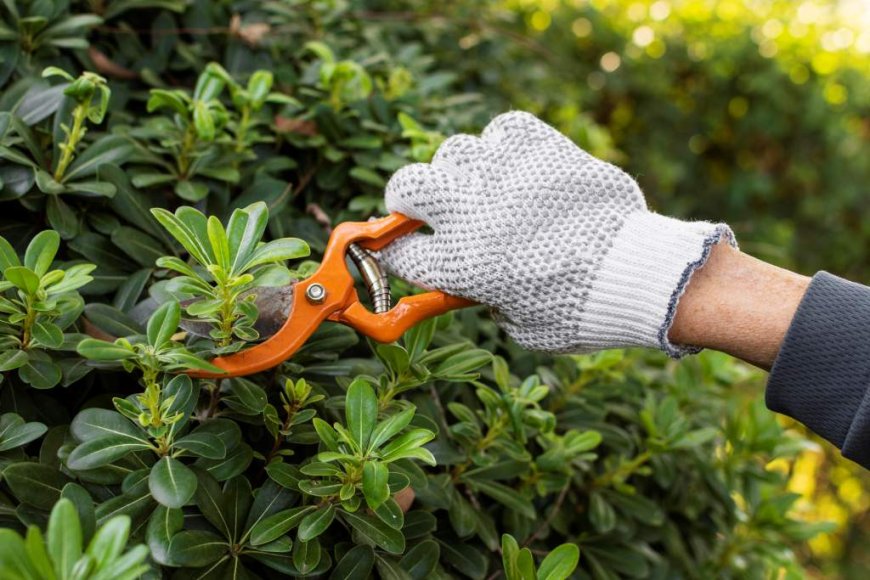Tree Pruning: The Secret to Healthy, Thriving Trees
Tree pruning isn’t just about keeping your yard tidy — it’s about ensuring the health, safety, and beauty of your trees for years to come. With the right approach, pruning can prevent disease, encourage strong growth, and make your landscape safer and more attractive. Whether you’re doing it yourself or calling in a pro, regular pruning is a smart investment in your home and the environment.

Lets face it: trees dont exactly come with an instruction manual. But if you want your landscape to look beautiful and your trees to live a long, healthy life, tree pruning is one of the most important things you can do. Pruning helps trees grow strong, removes dead or diseased limbs, and prevents future problems. Whether youre a seasoned gardener or a complete newbie, this guide will teach you everything you need to know about the art (and science) of pruning trees.
The Science Behind Tree Pruning
Understanding Tree Growth
Trees grow in layers new growth on the outside, old wood inside. Branches compete for sunlight and nutrients, and without pruning, a tree can become overcrowded or structurally weak.
How Pruning Affects Tree Health
By removing unhealthy, damaged, or competing limbs, pruning allows the tree to redirect its energy to the healthier parts. Think of it like giving your tree a boost by cutting off the bad habits.
The Natural Healing Process
When done right, trees can naturally seal pruning cuts forming protective tissue called callus wood that guards against pests and disease.
Types of Tree Pruning
Crown Cleaning
Removing dead, diseased, or broken branches to improve the trees health and appearance.
Crown Thinning
Selective removal of branches to increase light penetration and airflow, reducing wind resistance.
Crown Raising
Lifting the bottom of the canopy by removing lower branches. This helps with visibility, clearance, and light.
Crown Reduction
Reducing the overall size of a trees canopy, usually to avoid power lines or structures done carefully to preserve tree health.
Deadwooding
Targeting only dead limbs that can fall and become a safety hazard.
Benefits of Regular Tree Pruning
Healthier Trees
Pruning promotes stronger, more balanced growth and prevents diseases from spreading.
Enhanced Appearance
A well-pruned tree looks more refined and well-kept it can even increase your homes curb appeal.
Increased Sunlight and Airflow
Pruning opens up space, allowing sunlight to nourish your lawn and plants while reducing mold and fungus on your tree.
Safer Property and People
By removing hazardous limbs, pruning prevents potential damage to your home or injury to people and pets.
When to Prune Trees
Best Time of Year
-
Winter (Dormant Season): Ideal for most trees promotes spring growth.
-
Summer: Good for slowing growth or removing weak limbs.
-
Avoid fall, as pruning wounds may not heal well before winter.
Signs That a Tree Needs Pruning
-
Broken or hanging branches
-
Tree limbs touching power lines or roofs
-
Crowded or crossing branches
-
Dead, diseased, or insect-infested limbs
Tree Pruning Tools and Equipment
Essential Tools for Homeowners
-
Hand pruners (for small branches)
-
Loppers (for thicker limbs)
-
Pruning saws
-
Pole pruners (for higher limbs)
Professional-Grade Equipment
-
Chainsaws
-
Climbing gear
-
Hydraulic pruning tools
-
Aerial lifts or bucket trucks
How to Prune a Tree (Step-by-Step)
1. Inspect the Tree
Look for signs of disease, deadwood, or overgrowth. Make a plan before making a cut.
2. Choose the Right Branches
Focus on removing:
-
Dead or diseased wood
-
Rubbing or crossing branches
-
Limbs growing inward or downward
3. Make the Cut
Use the three-cut method:
-
First cut: Underside of the branch a few inches from the trunk
-
Second cut: Top of the branch to remove the weight
-
Final cut: Just outside the branch collar to help healing
DIY Pruning vs Professional Services
Pros and Cons of DIY
Pros:
-
Cost-effective
-
Immediate action
Cons:
-
Risk of injury
-
May harm the tree if done wrong
-
Limited access to tall limbs
Why Hiring a Pro Is Often Best
Arborists have the training, tools, and knowledge to prune trees safely and correctly especially for large or valuable trees.
Safety Tips for Tree Pruning
Personal Protective Equipment
-
Gloves
-
Safety goggles
-
Helmet
-
Long sleeves and pants
-
Non-slip boots
Avoiding Common Injuries
-
Never prune near power lines
-
Dont use chainsaws above shoulder height
-
Use ladders safely or call a professional
Common Tree Pruning Mistakes
Topping Trees
Cutting off the top of a tree to reduce height bad idea! It weakens the tree and ruins its structure.
Over-Pruning
Removing more than 25% of a trees canopy can stress or kill it.
Incorrect Cuts
Cutting too close or too far from the branch collar can slow healing or invite disease.
Tree Species and Their Pruning Needs
Deciduous vs Evergreen Trees
-
Deciduous (e.g., oak, maple): Benefit from winter pruning
-
Evergreens (e.g., pine, spruce): Prune in late winter or early spring
Fast-Growing vs Slow-Growing Varieties
Fast-growing trees like willows or poplars need more frequent pruning than slow-growers like oaks or magnolias.
Environmental Benefits of Pruning
Supporting Local Ecosystems
Healthy trees provide better shelter, food, and homes for birds, squirrels, and pollinators.
Improving Air Quality
Pruned trees grow more efficiently, which means they absorb more CO? and release more oxygen.
Conclusion
Tree pruning isnt just about keeping your yard tidy its about ensuring the health, safety, and beauty of your trees for years to come. With the right approach, pruning can prevent disease, encourage strong growth, and make your landscape safer and more attractive. Whether youre doing it yourself or calling in a pro, regular pruning is a smart investment in your home and the environment.
FAQs
1. How often should I prune my trees?
Most trees benefit from pruning every 23 years, but fast growers may need yearly attention.
2. Is pruning the same as trimming?
Not exactly. Pruning focuses on health and structure, while trimming is more about shaping and appearance.
3. Can pruning kill a tree?
Yes, if done incorrectly or excessively. Thats why knowing how much and where to cut is important.
4. Do young trees need pruning?
Yes! Early pruning shapes the trees structure and reduces future problems.
5. What happens if I dont prune my tree?
You may end up with weak branches, overgrowth, disease, and safety hazards.

































